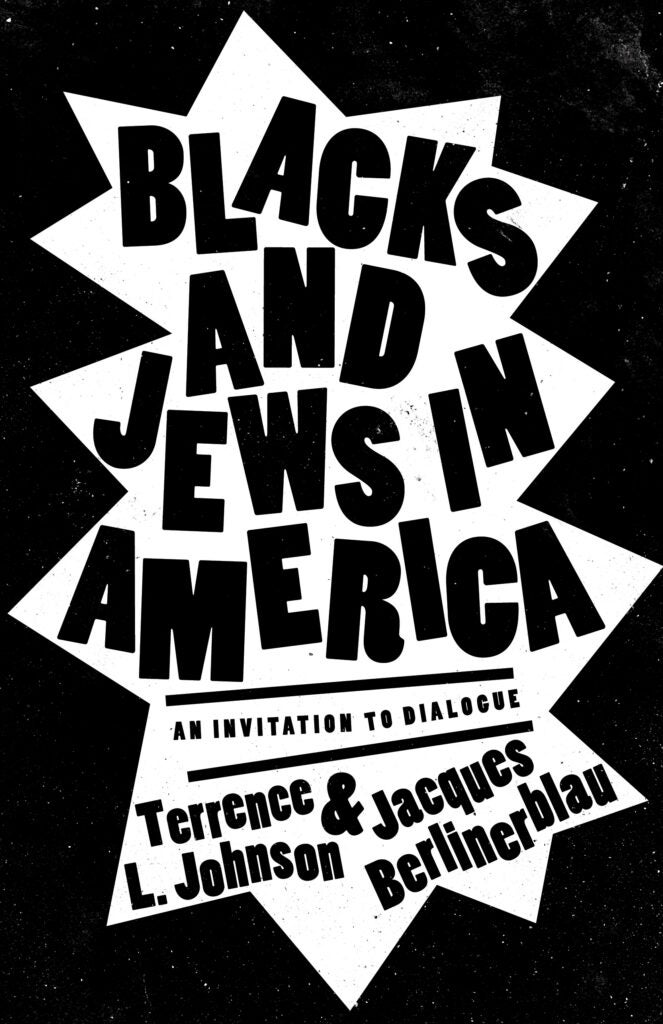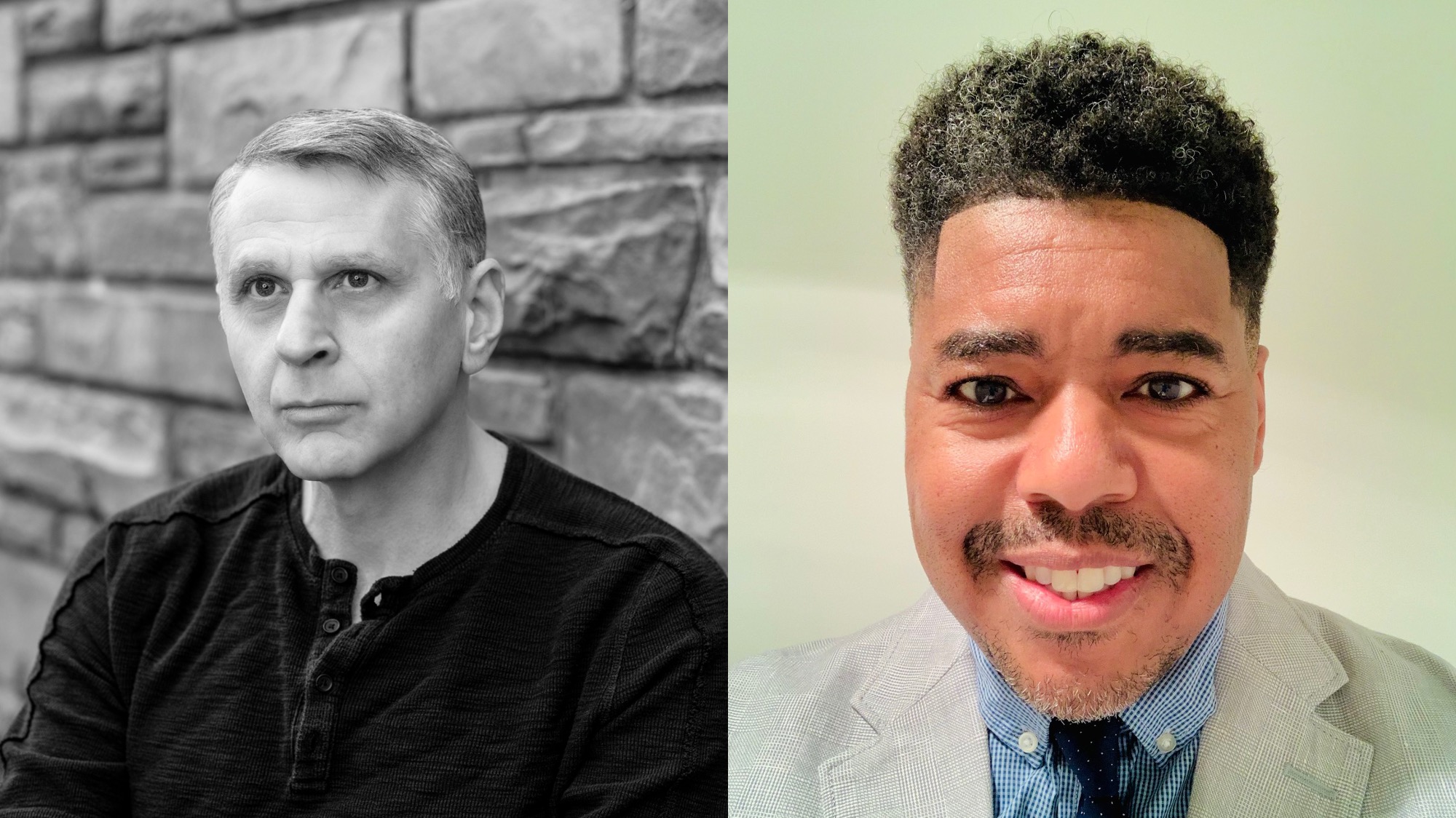Can Dialogue Engender Solidarity? A New Book Invites Conversation and Action Between Blacks and Jews in America
In the aftermath of WWII, African American and Jewish activists found joint cause in their struggle for equality. The ensuing coalition of African American and Jewish activists, referred to as the Grand Alliance, proved that solidarity between marginalized people can overcome oppression.
But there’s more to the story. In 2016, as white supremacy regained national prominence in American politics, many pundits and observers wanted leaders in these communities to “get the band back together,” according to Jacques Berlinerblau, a professor of Jewish civilization at the School of Foreign Service.
The nostalgia for this coalition, however, is mostly that – an afterglow, a term that Berlinerblau and his co-teacher, Terrence Johnson, an associate professor of religion and politics in the Department of Government, use in their course Blacks and Jews in America.
Central to their work is a thorough study of the Grand Alliance – one that moves beyond its mythology. Rooted in an honest understanding of that coalition, Johnson and Berlinerblau ask their students to question the conventional narratives around that tenuous movement. Johnson and Berlinerblau are excited to engage a new, broader audience with these same questions in their forthcoming book, Blacks and Jews in America.
A Conversation Worth Having

The book’s subtitle, An Invitation to Dialogue, is reflective of both the work’s form and its function. Much of the writing is transcribed conversation between Johnson and Berlinerblau, or essays in response to one another, often welcoming in a rotating cast of intellectuals and thinkers to weigh in on specific topics.
The structure of the discourse reflects the nature of the book – using a dialogue between two communities to search for a dialectical truth. That same dynamic energy has been present in the classroom.
“The great thing about teaching with Jacques is it feels like we’re constantly in a concert,” says Johnson. “He’s a jazz musician – it is a constant back-and-forth, sometimes Jacques is the lead, sometimes I’m the lead and sometimes the teaching assistant is the lead.”
In the book, as in their class, they aren’t afraid to push beyond polite barriers and confront deeper issues. Blacks and Jews in America is decidedly against self-congratulatory rhetoric. Often, when the historical coalition of African American and Jewish activists is brought up, “platitudes are spouted,” says Berlinerblau. “People nod their heads. And then they nod their heads some more. And then someone says, ‘We’re all in this together.’ Or someone mumbles something about education, the internet and the youth.”
Rather than fall back on these grandiose ideas, they want to push the narrative forward. A pivotal moment occurs every semester when their class confronts the reality that the Jewish community and the African American community are not entirely distinct, they overlap.
“Non-Jews often see Jews as a monolithic people here in the United States,” says Johnson. “To then get exposure to the range of Judaisms, including Afro-Jews, is pretty shocking for African Americans. The colorization of Judaism jolts both groups – what do we mean by tradition? What do we mean by identity?”
Breaking down those mental barriers is the real beginning of the conversation.
Finding Hope for the Future in the Past
While current events “animate” the course, according to Johnson, the substance of their teaching is rooted in the “real, messy history of African Americans and Jews, particularly in the United States.”
Through the course of their study, students are sometimes shocked by just how much the Grand Alliance accomplished despite its volatile nature. It’s valuable, according to them, to remind readers, and students, of the kind of monumental achievements that have been won in the past.
“Blacks and Jews came together to advocate for voting rights legislation and desegregation,” says Johnson. “Civil rights leader Booker T. Washington and Jewish philanthropist Julius Rosenwald partnered to build more than 5,000 African American schools in the South – a lot of people are profoundly in shock about these prior relationships.”
Both professors have seen profound growth among and alongside their students. That’s why they enlisted the help of two undergraduate students, Alexander Lin (SFS’23) and Ria Pradhan (SFS’23), as researchers in the process of drafting and editing the book.
“Terrence and I agree on the importance of undergraduate pedagogy and working closely with undergraduates,” says Berlinerblau. “It’s a better book because they were there during our self-interviews, prompting us and redirecting us. That process of bringing undergraduates into the research space is so important and I wish there would be more of it at Georgetown and across the country. This book is a testament to what happens when you do that.”
Published by Georgetown University Press, Blacks and Jews in America will be available in hardcover and ebook formats beginning February 1. This book, like the course that preceded it, is a call to dialogue and a call to action.
“My hope is that this will be a starting point for adding nuance to our political imagination, how we talk about the right versus the left,” says Johnson.
